Here's a riddle for you related to organizations: he usually wears black and white but is not a zebra, has a piercing gaze but is not a panther, is often quite heartless, and is not the college professor who gave you a three on the last midterm of your life. He's overbearing and more distant than the kingdom of Far, Far Away in the Shrek movie. Want the answer? Here it goes: b-o-s-s.
As if it were an absolute monarchy that - sadly - still constitutes a large part of organizations, the figure of the "boss" as an entity appointed by a supreme God is at the top of the ranking known as "the list of roles that should cease to exist in your company".
The intrepid advance of a technology that does not ask permission to grow, paradigm changing became notorious, especially in the organizational world. Companies and institutions are looking for exponential growth are currently in changing towards liquid management models, or in other words, models with a horizontal organization chart.
Goodbye, bosses. Hello servant leaders.
What are liquid organizations?
Rooted in the term "liquid modernity" by Zygmunt Bauman, a Polish sociologist who died in 2017, this conceptualization refers to those corporate structures that evolve and transform in a diluted environment with the particularity of being flexible. That is where the words "adaptation" and "transformation" stand as the north of every mechanism of action and thought.
In this type of organization, working is structured is much faster, more transparent, and more concrete. With a blurred vertical hierarchy, the arrangement of work roles depends of the emergence of multidisciplinary teams that cooperate fluidly on a project basis.
Another characteristic of liquid organizations is that their focus is on human capital, i.e., the person is the center of the company, and every effort is to recognize and retain, not only for the position held but also for the skills and aptitudes -especially digital ones- that only enrich the organizational structure.
Companies and liquid collaborators accept changes and the speed of transformation as something natural, becoming versatile entities and individuals who know how to handle unexpected scenarios, working on innovative ideas that minimize risks.
The new leader in the liquid organizations
With this, the exercise of leadership as such has also evolved. The image of the glass office with a closed door that no one dares to touch has disappeared. Now we are in front of a liquid leader with no walls to separate or doors to terror. He's the one who observes, inspires, and motivates the team of talents to foster relationships. The quality standards that invite creativity and eliminate any trace of superiority or miscommunication that may perpetuate the poorly executed figure of the boss.
Thus, one of the main challenges of a flexible organization is to achieve true self-discipline since each person's primary task is to develop an awareness of the leading role in the project and how one must act to produce multiplying results as needs arise.
For this reason, the constitution of a liquid person takes into account not only the expected technical requirements but also soft skills such as the development of analytical thinking, active learning, social leadership, the use and control of technology, resilience, service orientation, emotional intelligence and the power to provide original solutions to the organizations.
Agility in liquid organizations
One of the cornerstones of this cutting-edge management is nothing more and nothing less than the philosophy of agile methodologies: be agile, and do agile.
Born at the dawn of the century that has us as protagonists, the concept of agility came to this world as a solution to a series of questions that many technology specialists began to ask: unproductive actions, projects that were canceled due to customer dissatisfaction, unnecessary bureaucracy and paperwork, very long working times … and more.
In this sense, the importance of the agile contribution in this area is the culture. That is, generating a space for organizational evolution and growth that involves not only the structure itself but also the employees.
What is the plus of the agile philosophy?
- Structure: it simplifies and eliminates levels, roles, and responsibilities inside organizations. It streamlines and decentralizes decision-making.
- Processes: frees time to focus on actions that generate value, manage and enhance planning and performance.
- Technology: favors the creation of tools and systems that support the implementation and start-up of rapid and dynamic changes.
- People: prepares managers to be servant leaders, manages talent through recognition and fosters organic communication networks.
